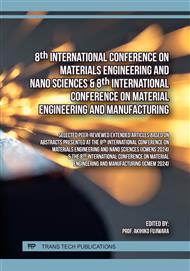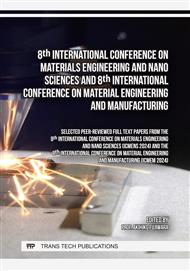p.3
p.13
p.19
p.25
p.31
p.37
p.45
p.53
Study of Phase Composition and Microstructure of Porous Alumina Ceramics Derived from Hydrothermal Powders
Abstract:
Conventional ceramic technology is a widespread technique for synthesizing a large range of materials for household use and engineering applications. However, for advanced technical ceramics different approaches should be used in order to obtain materials with unique physical properties. Despite the well-known technology for the synthesis of alumina-based ceramics, there are a lot of challenges in optimizing manufacturing conditions or integrating the newest technologies. In particular, there are still some challenges in sintering porous bulk ceramics. In this paper, we report on synthesizing mixed-phase porous α-Al2O3 by modernized ceramic technology method. Precursor powders for compaction were obtained by the hydrothermal method in a Teflon vessel. X-ray diffraction and scanning electron microscopy were used to characterize the synthesized samples. It was demonstrated that hydrothermal precursors with chemical residuals make it possible to synthesize porous ceramics with an open porosity of 55–80% and an apparent density of 0.76–1.80 g/cm3. The change in microstructure of sintered samples is explained by precursor powder morphology. The developed approaches can be used in modernized ceramic technology to synthesize porous oxide materials for filters of gases and liquids or refractories.
Info:
Periodical:
Pages:
19-24
Citation:
Online since:
September 2024
Keywords:
Price:
Сopyright:
© 2024 Trans Tech Publications Ltd. All Rights Reserved
Share:
Citation:



